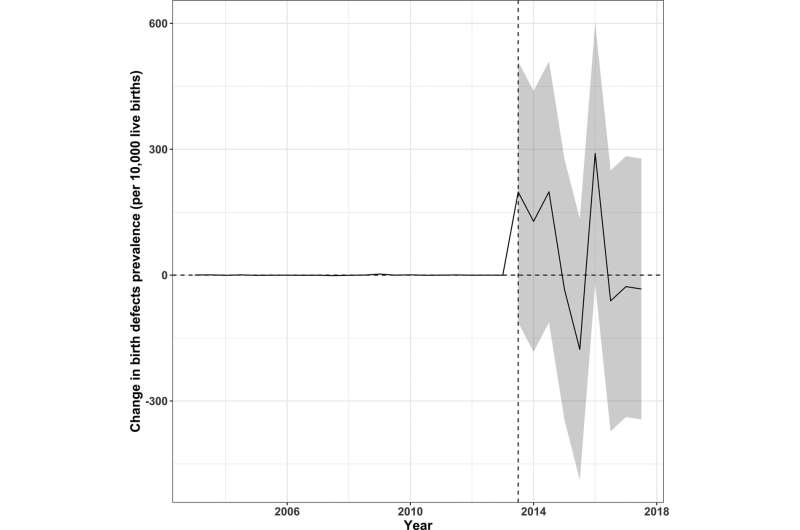This article has been reviewed according to Science X's editorial process and policies. Editors have highlighted the following attributes while ensuring the content's credibility:
fact-checked
trusted source
proofread
Study examines prevalence of birth defects following direct potable reuse water system implementation

Direct potable reuse (DPR) water systems add purified wastewater directly to a water distribution system, instead of first passing water through an environmental buffer such as a lake or reservoir. These systems are being considered in some water-stressed regions across the U.S. to address water shortages. However, little is known about the health outcomes of people who receive DPR drinking water.
A study led by an investigator at Baylor College of Medicine examined whether birth defect prevalence changed in four west Texas counties in the period after DPR was introduced. The findings are published in the journal Environmental Epidemiology.
"An environmental buffer allows for some degradation, through microbial activity or UV light, for example, of potentially harmful compounds that might be present in treated wastewater," said first author Dr. Jeremy Schraw, epidemiologist and assistant professor of pediatrics—oncology at Baylor. "We wanted to examine whether using an alternative approach might affect the prevalence of birth defects in the population."
Investigators studied Texas birth defect data from 2003 to 2017. They used the ridge-augmented synthetic control method to model changes in birth defect prevalence (per 10,000 live births) following the introduction of DPR to populations in Ector, Howard, Midland, and Scurry Counties in mid-2013.
The study suggested there were approximately 50 additional cases of birth defects and 280 additional cases of congenital heart disease per 10,000 live births in these counties during the years 2014-2017. The estimated prevalence of neural tube defects was unchanged.
The results of this study are intended to reflect the net change in birth defects at the population level in the period after DPR implementation, and Schraw emphasizes two important caveats to these findings. This study did not directly measure drinking water quality in these areas, and researchers did not determine where the mothers of these children with birth defects obtained their water.
"Our study does not establish a causal role for DPR with respect to birth defects, but it does raise the suggestion that there may be a link between direct potable reuse and an elevated risk of birth defects at the population level, specifically congenital heart defects," Schraw said.
"As DPR is considered for wider deployment, further study of birth defects in these regions is needed. We need to understand the composition of these drinking water mixtures, where people living in these areas are sourcing their drinking water, and whether they might alter their behaviors in response to DPR implementation."
More information: Jeremy M. Schraw et al, Direct potable reuse and birth defects prevalence in Texas: An augmented synthetic control method analysis of data from a population-based birth defects registry, Environmental Epidemiology (2024). DOI: 10.1097/EE9.0000000000000300




















